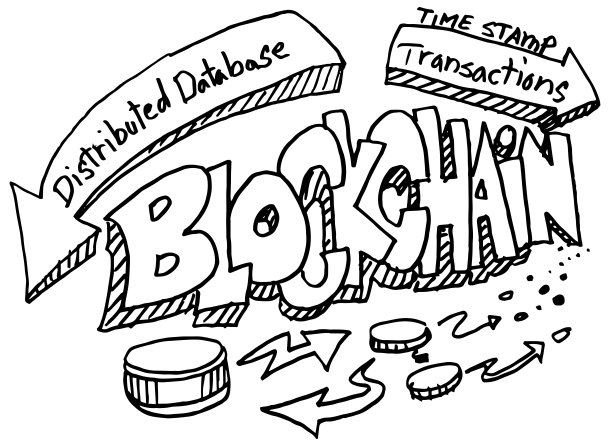Let's imagine SteemWeather. What Would a Decentralized Global Weather Service Look Like?
Anyone would have the ability to set up a weather sensor or "WeatherNode" and receive micropayments for contributing accurate weather readings to the blockchain.
Now as of right now this idea is hypothetical, but if implemented properly this system would contain abundant advantages over the traditional weather system. A type of system such as this wouldn't be easily or quickly implemented, but it is completely within the realm of possibilities in the near future. The basics of the system would be that any individual worldwide would be able to purchase a "WeatherNode" that collects humidity, wind, temperature, and other readings, which are then instantly relayed to the blockchain. The WeatherNodes would have the ability to be solar powered so there would be very minimal adjustments ever needed. The WeatherNodes that relayed accurate information would receive constant micropayments for their information and contribution. The example of a decentralized weather service was presented in a book I'm currently reading, "Blockchain Revolution", which was written by Don and Alex Tapscott.

Lowering costs and Improving Weather accuracy.
After a sufficient number of WeatherNodes are implemented, the current weather conditions would be much more accurate and updated continually. The information that each WeatherNode sends to the blockchain is public, and the information can be used to predict future weather conditions in the area. The upkeep costs of running a WeatherNode would be virtually non-existent, unless a problem with the weather node arises. Currently many large weather companies and networks get their data off of satellite readings, and these readings are currently fairly accurate. But, even satellite readings still cannot compete with the accuracy of having weather gathering information distributed "on the ground". The total costs of gathering this information would also be greatly reduced, because the WeatherNode "operators" are compensated directly based on the value of the information their node provides. The upfront capital required to launch this system would be low because of its distributed nature, and this would allow for a completely scalable platform as time went on and more WeatherNodes appeared.
Consensus on the blockchain would mitigate invalid data.
Let's suppose that an individual had a WeatherNode on their roof. The next day violent gusts of wind or another unpredicable event knock the WeatherNode off of the roof. The WeatherNode isn't completely broken, so it is still sending it's data to the blockchain. Once the data from that WeatherNode is received by the blockchain the data from surrounding WeatherNodes proves that the data is invalid, and as such the micropayments halt until the time when the Node begins to send accurate data again. An algorithm to interpret and display the correct data and weather predictions would be completely possible to create.
Worldwide adoption may be difficult because of the necessary amount of WeatherNodes, but it is completely feasible to imagine the success within North America.
That is not to say that this type of system could never be implemented worldwide, but it would likely need to begin and have success in North America and Europe before its global adoption. Due to the relatively condensed population of the US, as in number of people living in and around metropolitan areas, the number of people running WeatherNodes wouldn't need to be too high for the platform to become a reliable and practical source of weather for many individuals. The increased accuracy and use of advanced algorithms could easily lead to the platform becoming one of the most accurate ways to predict weather patterns and future weather.

Running a WeatherNode is comparable to traditional cryptocurrency mining.
Although you aren't mining by using computer power or computer resources, an individual is setting up a valid node on the program's blockchain. An individual is sacrificing resources, in this case money for the purchase of the WeatherNode and space, for the benefit of the network. As the number of WeatherNodes increases, the amount of payment that each specific node receives would likely be reduced. The payment systems could likely be similar to Steemit, as in the more individuals who benefit from the weather information, the more the contributors of that information would receive as payment. This type of scalability and payment method would eventually likely lead to an abundance of WeatherNodes, which would allow for extremely accurate readings and predictions.
All members are incentivised to act honestly, because their resources and reputations are at stake.
As a WeatherNode continues to submit valid data to the blockchain, the Node begins to develop a reputation similar to Steemit. When the Node submits valid data its reputation on the blockchain increases, but if a node is found to be submitting invalid data then the reputation score of that Node will decrease. The nodes with the highest reputations will have the largest influence on the validation of data. Even if many nodes with high reputations went haywire, then the invalid data they provided would still be invalidated simply because of the sheer mass of data. Operators of the WeatherNodes have interests of making sure their nodes are running optimally, because the most accurate nodes receive the highest compensation.

Lowering the barrier to weather information around the world.
In many parts of the world individuals have abundant access to weather information and predictions, but there are still many parts of the world where individuals do not have this information readily available. The reason that weather services are not typically focused in these areas is because there is a lack of viewership and people with the means to reach the information. Due to the relatively low chance of abundant WeatherNodes in these countries, the individuals who did run WeatherNodes in these areas would likely be heavily compensated for their efforts compared to those in areas with more Weathernodes. These individuals compensation would likely be greater because they are contributing a higher percentage of the data required for that specific area. This high payout percetage would also make the idea of setting up WeatherNodes in these areas more attractive to potential investors. Regardless of in which way the nodes were implemented, they would still help give an increased number of people access to reliable and accurate weather information.
I by no means have the technical ability to construct anything of this size or manner and in no way was I trying to convey the message that I do. This system is currently hypothetical. Merely wanted to discuss this idea and how it could potentially be relevant to Steemit. Like I stated earlier, the original thought came through the book, "Blockchain Revolution" by Dan and Alex Tapscott. I highly recommend it to anyone interested in the true power of blockchain technology in every corner of our lives.
This is a super cool idea and as you so well mentioned the reputation of the ones publishing the results would be at stake, therefore the odds would be super high to find quality and reliability.
Thanks for your high quality sharing. All for one and one for all! Namaste :)
Thanks for reading!
Great idea. I'm looking forward to when this becomes a reality.
I sure hope that one day it does. It's completely reasonable to imagine this becoming a reality in the upcoming years.
It most likely will sooner or later.
Cooperative Agorism - a consciously pursued technolical outbuilding of established national institutions - is spreading like a wild fire and is even being aided by governments themselves that have to adopt blockchain technology in order not to be outcompeted in the marketplace of ideas.
The day will come when that spreads to weather reporting.
I can see why. I still don't believe institutions will ever be able to be ahead of the innovations that arise. As technology continues to advance I believe it will eventually mitigate the need for a structured government like we see today.
That's exactly what I'm working for. Just being here and helping a crypto company in the beta testing of their platform takes us all a small step in the right direction.
That's a great way to look at it. Blockchain technology is still currently to "confusing" or "technical" for many people and the incentives simply haven't been presented yet. The advancement of blockchain and cryptocurrency technology is highly dependent on the current users.
I love the idea. For that matter, some of the BOINC/Gridcoin-type of networked do-gooder work could be incentivized. The power of a network that can reward people...
Thanks. I have the feeling that incentives are the only way to reach the full potential with this type of technology technology. Incentivizing individuals to contribute is the way a platform could ever reach an adoption, but that by no means correlates to the platform being any less beneficial.